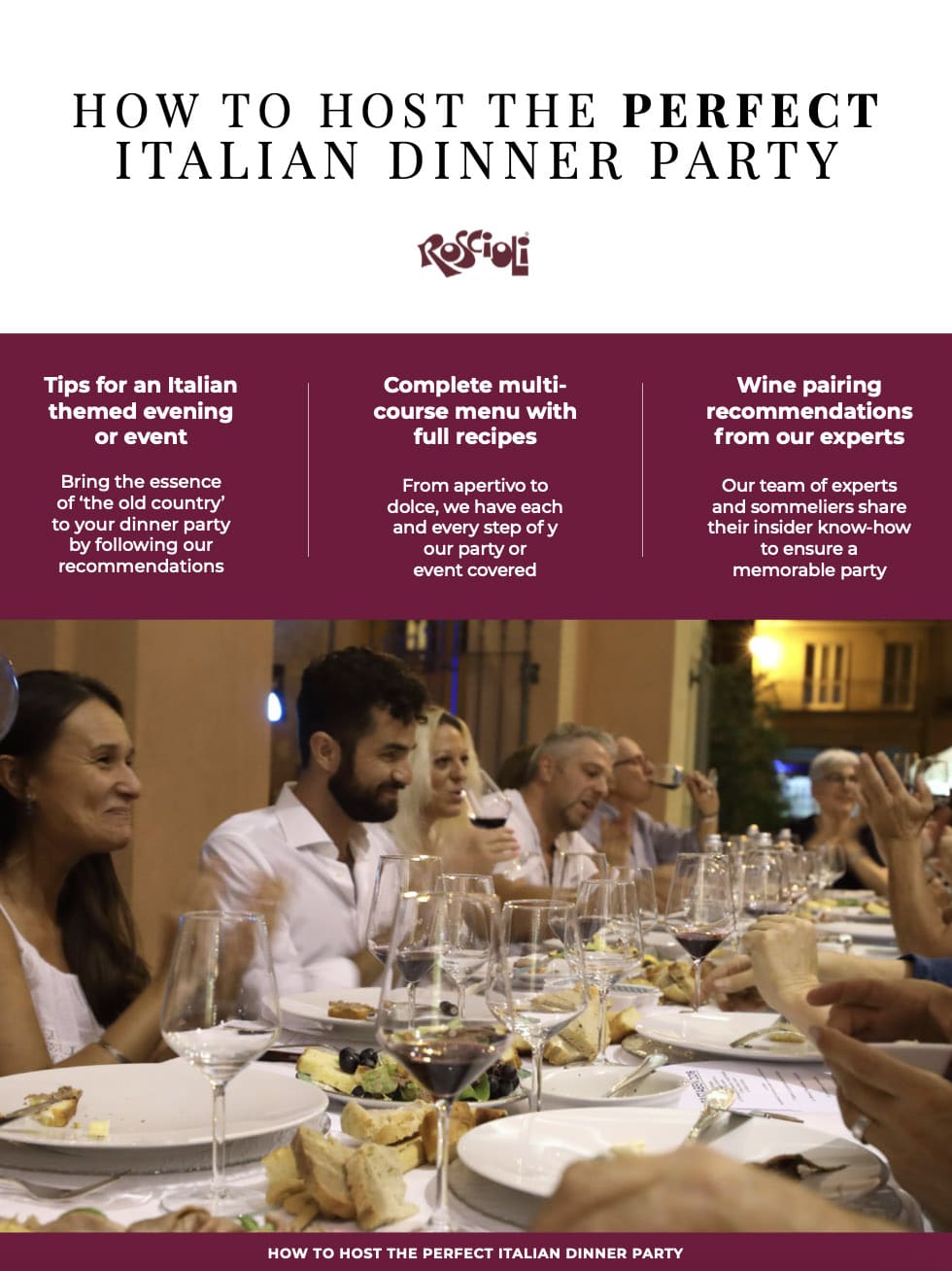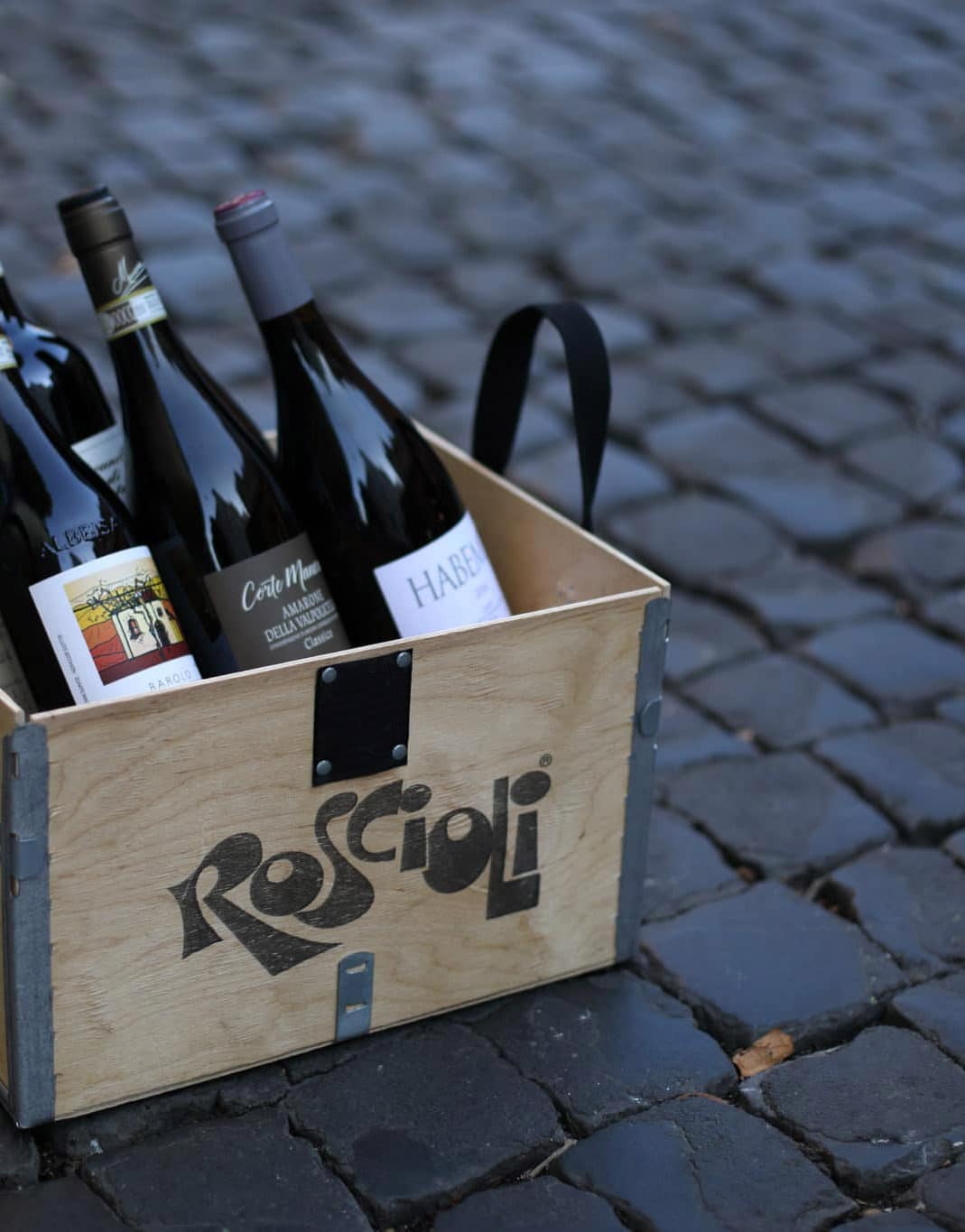VINO SPUMANTE DI QUALITA 'ASPRINIO', I BORBONI
Grape: 100% Asprinio d'Aversa
Region: Aversa and Giugliano (CAMPANIA)
Pairings: fresh mozzarella, fish dishes, or as an aperitive
Notes: sandy soils, mainly of volcanic origin, hand harvested, 6 months in steel, 6 months in autoclave, 4 months in bottle
Drink by: Now - 2021
Description: I'm not going to lie - we chose this on a blind recommendation of another famous wine producer, Giovanni Ascione of Nanni Copè, and fortunately he is batting 1000 for his local selections. There are no words I can write to explain the beautiful shock and surprise we experienced at I Borboni. Just when you think you've seen it all, all I can say is 'Toto, we're not in Napa anymore'. This video is a MUST watch to see some of the most impressive and unique vineyards that must be worked by a few brave souls to deliver you this wine. I Borboni takes depths and heights to a new level - a 40-meter deep cellar/grotto below their home carved out of the local tuff and vines sprawling 15 meters into the sky.
We got lucky on this one, stumbling across a needle in a haystack, in a countryside that is littered and stained by mafia and corruption. Here, generations have worked to preserve this magical place and grape of Asprinio, capable of producing a level of juice that even the French deemed worthy of using for their sparkling wines at one time, all of which is at risk of being lost if not for families like the Numeroso's.
Let go of any preconceived notions you have here for a sparkling wine from Prosecco to Champagne. Here you have a wine with the same acidity of a lemon, but don't expect this to be a sparkling lemonade. On the nose, you will catch citrus notes of lemon that are softened by floral and herbal aromas. On the palate you find a strong, refreshing presence of acidity, all well balanced by a creamy sapidity. And this wine is completely dry on the finish.
Asprinio's origins could date to as far back as the Etruscans or Greeks. Regardless, this lesser-known, local grape runs the risk of extinction to the more common Falanghina, Fiano and Greco di Tufo. Even if this grape doesn't come with the mass survey thumbs up, I can say that you are in for a new and palate-shocking experience with sparkling wines with this one. If you aren't experiencing this wine in Campania, head straight to Eataly, or your local Italian market, and find some fresh-made mozzarella for the perfect territorial accompaniment to this brut spumante and drink in reverence while you contemplate the joy the derives from one of the most difficult harvests from vines 45 feet in the sky.
MARCHE TREBBIANO 'TREBBIEN' 2016, VALTER MATTONI
Grape: 100% Trebbiano
Region: Castorano (MARCHE)
Pairings:
Notes: biodynamic philosophy, steel and aged barrique, 40 year old vineyards, 900 bottle production
Drink by: Now - 2021
Description: The more I write these notes, the more I think: what’s the point?
There’s a video with the winemaker telling you everything and there’s a bottle in front of you and there’s me who spent the last 10 years saying: there’s no point in describing a wine, it is technically unnatural, words and taste don’t match, literally from a neurological point of you. And all those fancy descriptions, those hints of Mexican lime and Provencal lavender (and don’t forget the evergreen Russian leather). I mean all those professional tasting notes which make you feel so stupid in either case: when I say them (what the f…k am I talking about?), and when you hear them (what the f…k is he talking about?).
And I’m not alone. I can prove it with the coming out of some of the best palates in the world.
And even if I wanted to try to describe Valter Mattoni wines in an official way, he won’t let me. He would surely say: wine is to get rid of the Arshura (Arshura means something similar to dryness or burning thirst). Because, as he says, we have Arshura of everything: things, food, love, sex and surely wine.
But I have to say (forgive me Valter) that his wines are incredible. They are a synthesis of rural and intense flavors and they have a great balance between simplicity and complexity. Wines for intellectuals who want to get rid of the burden of sophisticated matters and just to easily drink it, and wines for easy people that want to shock their simple existence.
Trebbien means very good in Italo-French. It’s a synthesis of Trés Bien mixed with a local dialect from Marche. I believe that Valter wanted to make a joke on French wines but also on himself. He felt, I think, a bit ridiculous when he started to make wine 20 years ago after spending the 15 years before drinking the best wines in the world (namely Burgundy whites) at the legendary Osteria degli Aranci (I was one of the lucky ones who was there before they closed). So Trebbien is a way to make noble that which is not (the simple grape variety Trebbiano) and to make simple that which is noble. A white wine that is crispy and mineral, complex but easy to drink and also good to age few years in the cellar.
Have it as an endless aperitif, one of those in which you forget to serve dinner, on a simple table, surrounded by your best friends.
MARCHE ROSE 'COSE COSE' 2017, VALTER MATTONI
(same producer as Trebbien - above video)
Grape: 100% Montepulciano
Region: Castorano (MARCHE)
Pairings: Manchego or Parmigiano cheeses, most meats (also grilled meats)
Drink by: now through 2022
Notes: biodynamic philosophy, 1200 bottle production,
Description: Here again you have the same producer from above.
Again here Valter is fighting with the concept of wine description. So this wine is everything, all you need from a wine. Pure Sangiovese as you never had before. Truly drinkable, fruity and easy. The wine for companions, for salami and pecorino - or a for any food really - or just a warm, sunny day.
COSTE DELLA SESIA NEBBIOLO DOC 2015, ANTONIOLO
Grape: 100% Nebbiolo
Region: Novara, Vercelli and Biella (PIEMONTE)
Pairings: red meats done delicately, beef tartare, medium aged cheeses
Drink by: Now - 2020
Notes: natural fermentation, practicing organic, no added yeasts, steel tanks for 12 months, 6 in bottle, most vines over 30 years old, very low sulfur
Description: The first time I visited Lorella Antoniolo I was with Margrit Mondavi (Robert’s wife) And I still remember it as one of the greatest wine days of my life. Let me tell you that Margrit has been one of the greatest women I’ve ever met.
What was I doing there? A travel agent contacted me because a group of Americans wanted a guide / professional sommelier to visit some wineries in the north of Piedmont. I suddenly understood that they were experts / wine lovers. When we talk about Piedmont wines, we refer to Barolo and south Piedmont, not to the north. But my surprise was even bigger when I discovered that the client was Margrit Mondavi, with a group of friends from Chile.
It was also soon evident that I was completely useless as a guide. Margrit knew about Gatttinara, Ghemme, Lessona more than I did. She spoke some 4-5 languages and she was a Burgundy and Nebbiolo lover (when I asked what she considered the best vintage of Opus One she answered: I usually don’t drink that stuff).
And at 89 years old, this amazing lady was running in the vineyards able to recognize the grape variety, the style, the clones. She was originally from Switzerland (not so far from Gattinara, then) and she said that Nebbiolo was her wine for everyday drinking.
She told me also that in the 18th century, nobody knew about Barolo and rather Gattinara was one of the most famous wines of Europe. The French used to come here to buy wines, where you find 10 thousand acres of vineyards (while Barolo now is less than 6 thousand), and wines that were able to age up to 40-50 years.
How many Barolo older than 30 years I've opened that were completely gone and how many Gattinara from the late 50’s I've drank that were still in perfect condition... One was a Ghemme 1955, that we had with Margrit that day. She went back to memories - in the late 60’s when Napa Valley was just a small niche market of high-quality wines, not trendy and commercial yet, like Gattinara today, probably.
I remember tasting a Juvenia Coste della Sesia, a floral and delicate Nebbiolo, refreshing and perfumed, paired with a lightly dressed beef tartare. After that a Gattinara, more powerful, with the strength and the tannic density of a wine that could age for 20-30 years (and probably more). We had it with a beef stew.
And after that, a long discussion about how Gattinara sometimes is more elegant than Barolo, how the slate soil gives a metallic minerality with softer tannins, balanced by a refreshing saltiness and acidity. Wines that are not corrupted by marketing - over-fruity with a strong oaky flavor.
I suggest to have it with your grandmother, in her old, moldy house, smelling those familiar aromas, while listening to her stories.
PS... Before we left, I told Margrit that meeting her was an epiphany, how profound were her thoughts and stories, especially in a world of wine-marketing that is destroying the concept of wine itself. And she answered (probably a bit offended but with a motherly smile): You’re right my son, marketing is killing the wine, but not as much as snobbish sommeliers.
BARBERA D'ALBA SUPERIORE 2015, PALLADINO
Grape: 100% Barbera
Region: Serralunga d'Alba (PIEMONTE)
Pairings: adapts to nearly any dish
Notes: 12 months in large barrels (botti), 1500 bottles produced
Drink by: Now through 2020
Description: Just a few decades ago in the region of Alba (containing the famous and prestigious territory where you can make a Barolo), it was the Barbera which was considered the prestigious grape, not the more common association of Nebbiolo. You might find it hard to believe that it was the Barbera that people came to buy and if you bought a few cases, they would literally give you a case of Nebbiolo for free. All of this changed as the zone of Barolo has become synonymous with Nebbiolo, with nearly every square centimeter dedicated to it, whereas now it's often said that the best Barbera is from Asti, not Alba. But who knows...you'll have to try it know it. Few producers have maintained the tradition and their plantings of Barbera, like Roberto Conterno and his Cascina Francia Barbera, amongst a few others, and of course Palladino.
Here you have a wine that can adapt to just about anything from medium to hard cheeses, a variety of meats, pasta dishes and more. If you know the grape, in this one you may find to have more minerality at its core. There is of course a sapid, fruity and black cherry element to it making it quite easy to drink this powerful and fresh at the same time wine that carries subtle hints of earthiness, leather and cinnamon. A versatile wine to drink with good friends and good conversation, around a dinner table when you aren't sure what is being prepared.
ROSSO DI MONTALCINO 2016, BARICCI
Grape: 100% Sangiovese
Region: Montalcino (TOSCANA) from the prestigious cru of Montosoli
Pairings: Pasta dishes with meat sauces, salami, meat dishes,
Drink by: now until 2022
Notes: traditional winemaking, organic practices, 8 months in Slovenian large barrels, 4 months in bottle
Description: What is it? What should it be? What do I expect it to be?
I could ask the same questions about any other wine regions in the world from Napa to Burgundy, where a wine region is a middle answer between modernity and tradition, marketing and hard work, appearance and substance.
How do you define a wine from Napa Valley?
Which are the 'real' ones, and which are the 'good' ones?
What ones do I like and why? If you are getting into wine, these are the first questions that you will ask yourself.
Shall I start my Montalcino experience from Biondi Santi (historical) or from Banfi (modern and fancy)?
What if my palate prefers tradition and my brain prefers commercial flavor?
So what is the solution... drinking and listening to the wine, the winemaker, about soil, climate, history.
How many stories we've heard from fancy winemakers telling us a bunch of lies about how traditional and natural their wines are and how can you know if they are even telling the truth?
This is what I do... I perceive winemakers as actors.
They have to convince me. I perceive wine as a script and it needs to get me involved.
So why should I believe Francesco over the other thousands?
I don't know but there was something in the tone of his voice, and in the time it takes to answer a phone call or email (weeks).
Maybe the fact that his family has been producing wine here 50 years before Montalcino became famous and fancy, and the age of the plants can prove it.
I simply like him...from the tone of his voice to what he says, he makes me feel comfortable.
He gives me hope for the future - that you can still do your job where your job is the main issue...growing vines, and making wine, nothing else. But the final proof is the tasting experience.
You are in front of a wine that is 'naked'.
You perceive the grape, the soil, the metallic flavor coming from galestro soil, the powerful and refreshing acidity, the velvety tannins, with no hints of oak or sulphur or over-ripe Parkerized aromas which makes the wine so 'easy and conventional'.
I will put Francesco on my short list of the 5 or so producers of Montalcino that I can call 'real' (aware of the fact that reality is a transient metaphor).
I could speak about the Montosoli hill and the history of the Baricci family, but isn't it much easier to hear it directly from him?
So what is the wine like? All the grapes come from the same plants that make the Brunello but they had to make a Rosso for commercial purposes - people ask for it. You could put this with the best of the best of Rosso di Montalcino - even with the elegant Rosso of Biondi Santi or Poggio di Sotto. This is not your everyday, cheap version of Brunello (or if you think it is, it's time to step up to our Deluxe Wine Club). This wine is more structured, beautifully aromatic with berries and cherries, a slight licorice note and extremely elegant and fresh. Let this one breathe for 30-60 minutes before serving.
How to Host the Perfect Italian Dinner Party
Bring Italy to you with our free guide to planning and hosting the perfect Italian dinner party!
Find recipes, wine paring recommendations and other tips for a memorable evening, all curated by our team of experts - download today here:
 SEI IN ITALIA? CLICCA QUI
SEI IN ITALIA? CLICCA QUI 


